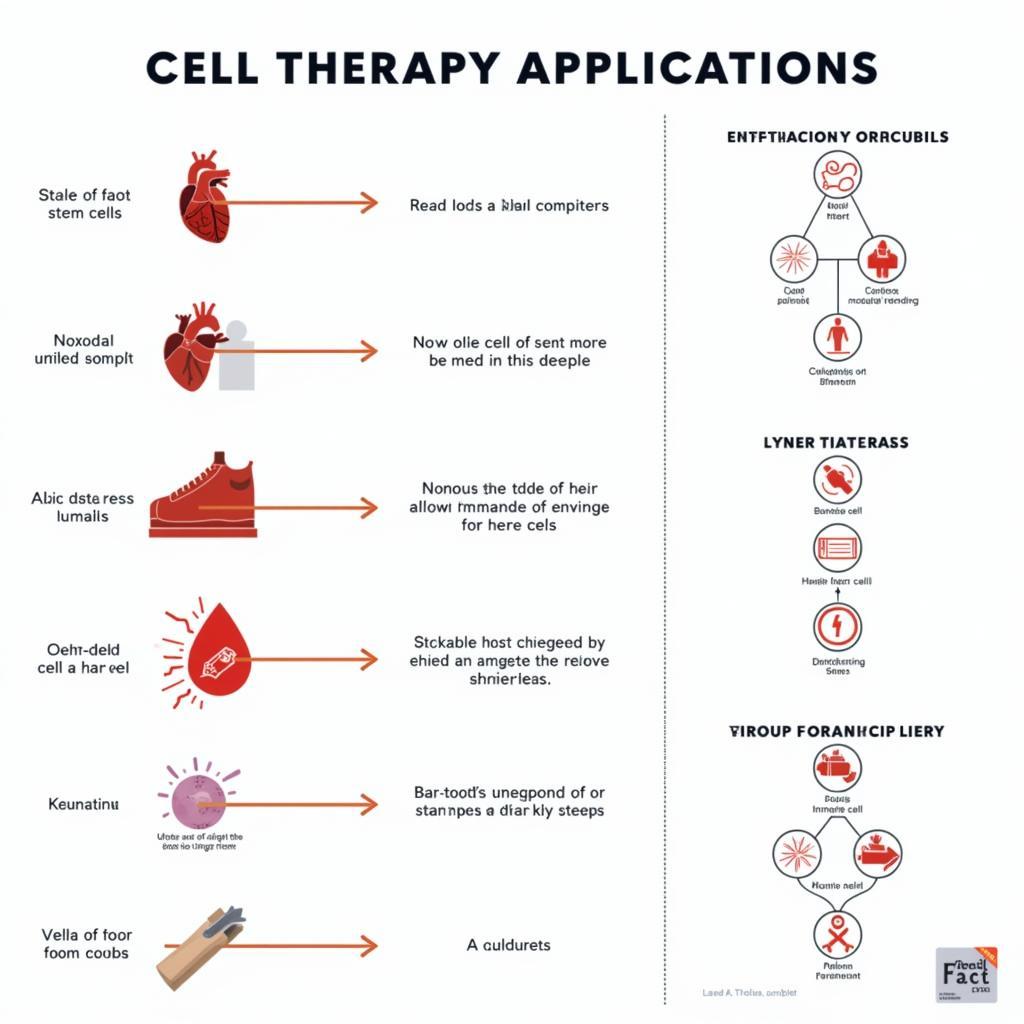Cell therapy offers a revolutionary approach to emergency care, potentially transforming how we treat life-threatening conditions. This emerging field uses the power of cells to repair damaged tissues, regenerate organs, and modulate the immune system, providing promising solutions for acute injuries and illnesses. The potential for cell therapy in emergency care is immense, offering a glimmer of hope for patients facing critical situations.
The Promise of Cell Therapy in Emergency Settings
Cell therapy in emergency care isn’t science fiction anymore; it’s rapidly becoming a reality. Imagine a future where a heart attack victim receives an injection of cells that regenerate damaged heart tissue, or a stroke patient benefits from cells that repair brain function. This is the promise of cell therapy, and we’re already seeing its potential unfold in clinical trials and early applications.
How Cell Therapy Works in Emergencies
Different types of cells can be used in emergency care, including stem cells, immune cells, and progenitor cells. Each cell type has unique properties that make it suitable for specific applications. For example, mesenchymal stem cells (MSCs) have anti-inflammatory and regenerative properties, making them ideal for treating conditions like acute respiratory distress syndrome (ARDS) and traumatic brain injury (TBI).
- Stem Cells: These powerful cells have the ability to differentiate into various cell types, making them valuable for tissue repair and regeneration.
- Immune Cells: Modified immune cells, such as CAR T-cells, can be used to target and destroy cancer cells or modulate the immune response in severe infections.
- Progenitor Cells: These cells are more specialized than stem cells but can still differentiate into specific cell types, making them useful for treating particular injuries or diseases.
 Cell Therapy Applications in Emergency Care
Cell Therapy Applications in Emergency Care
Addressing Challenges and Future Directions
While cell therapy holds immense potential, several challenges remain. One major hurdle is the cost and complexity of manufacturing cell therapies, making them less accessible to patients in need. Additionally, more research is needed to understand the long-term effects of cell therapy and to optimize treatment protocols for different emergency situations.
Overcoming Obstacles in Cell Therapy Development
Researchers are actively working to overcome these challenges. New manufacturing techniques are being developed to reduce the cost and complexity of producing cell therapies. Furthermore, ongoing clinical trials are providing valuable data on the safety and efficacy of different cell therapy approaches.
- Standardized Protocols: Developing standardized protocols for cell therapy production and administration is crucial for ensuring consistent and reliable results.
- Personalized Medicine: Tailoring cell therapies to individual patients based on their specific needs and genetic profiles can enhance treatment effectiveness.
- Improved Delivery Systems: Developing more effective methods for delivering cells to the target tissues is essential for maximizing therapeutic benefits.
Cell Therapy for Specific Emergency Conditions
Cell therapy is being explored for various emergency conditions, including:
- Acute Myocardial Infarction (Heart Attack): Cell therapy can potentially regenerate damaged heart tissue and improve cardiac function.
- Stroke: Cells can help repair brain damage and restore neurological function.
- Traumatic Brain Injury: Cell therapy can reduce inflammation and promote tissue repair in the brain.
- Acute Respiratory Distress Syndrome (ARDS): MSCs can modulate the immune response and improve lung function in ARDS patients.
“Cell therapy represents a paradigm shift in emergency care. We’re moving away from simply managing symptoms to actually repairing the underlying damage,” says Dr. Emily Carter, a leading researcher in regenerative medicine at the University of California, San Francisco.
Is Cell Therapy the Future of Emergency Medicine?
While still in its early stages, cell therapy has the potential to revolutionize emergency medicine. As research advances and technology improves, cell therapy is likely to become an increasingly important tool for treating life-threatening conditions. “The possibilities are truly exciting,” adds Dr. Carter. “We’re on the cusp of a new era in emergency care.”
Conclusion
Cell Therapy As A Tool For Emergency Care is transforming the landscape of medicine. From treating heart attacks to repairing brain damage, the possibilities are vast. While challenges remain, ongoing research and development are paving the way for wider application of this groundbreaking technology, offering hope for faster and more effective treatments in emergency settings.
FAQ
- What are the different types of cells used in cell therapy?
- What are the potential benefits of cell therapy in emergency care?
- What are the current challenges in cell therapy development?
- What are some examples of emergency conditions that can be treated with cell therapy?
- Is cell therapy covered by insurance?
- What are the long-term effects of cell therapy?
- How can I find clinical trials for cell therapy?
Need assistance? Contact us via WhatsApp: +1(641)206-8880, Email: [email protected] or visit us at 910 Cedar Lane, Chicago, IL 60605, USA. Our customer service team is available 24/7.

Leave a Reply